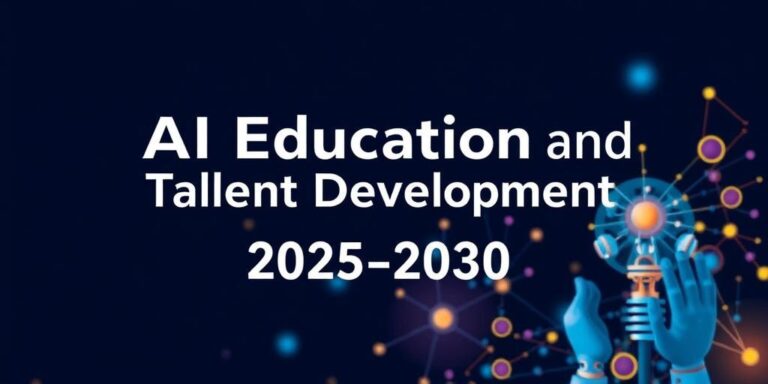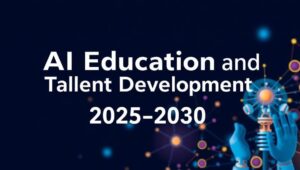The Talent Gap in AI: Educating the Next Generation (2025-2030)
The rapid advancement of Artificial Intelligence (AI) is transforming industries across the globe. However, this technological revolution faces a significant hurdle: a widening talent gap. As we move towards 2030, the demand for skilled AI professionals far outweighs the current supply. Addressing this gap through targeted education and training initiatives is crucial for sustained innovation and economic growth.
Understanding the AI Talent Gap
The AI talent gap refers to the shortage of qualified individuals with the necessary skills to develop, implement, and manage AI systems. This includes roles such as AI engineers, data scientists, machine learning specialists, and AI ethicists. The demand for these professionals is being driven by the increasing adoption of AI in various sectors, including healthcare, finance, manufacturing, and transportation.
Several factors contribute to this gap:
- Rapid Technological Advancements: AI is a rapidly evolving field, and educational institutions are struggling to keep pace with the latest developments.
- Limited Educational Programs: There is a shortage of specialized AI programs and courses at universities and vocational schools.
- High Demand: The demand for AI professionals is soaring, driven by companies investing heavily in AI initiatives.
- Geographic Disparities: AI talent is concentrated in specific regions, creating disparities in access to skilled professionals.
Addressing the Talent Gap: Educational Strategies
Closing the AI talent gap requires a multi-faceted approach focused on education and training. Here are some key strategies:
-
Curriculum Development: Universities and educational institutions need to update their curricula to include comprehensive AI courses. This includes:
- Foundational Courses: Mathematics, statistics, and computer science are essential building blocks.
- Specialized AI Courses: Machine learning, deep learning, natural language processing, and computer vision.
- Ethical Considerations: Courses on AI ethics, bias, and fairness are crucial for responsible AI development.
-
Industry Partnerships: Collaboration between academia and industry can provide students with real-world experience and ensure that educational programs align with industry needs. This can include:
- Internships and Co-op Programs: Providing students with opportunities to work on AI projects in industry settings.
- Guest Lectures and Workshops: Industry experts sharing their knowledge and insights with students.
- Research Collaborations: Joint research projects between universities and companies to advance AI innovation.
-
Online Learning Platforms: Online courses and certifications can provide accessible and flexible learning opportunities for individuals looking to upskill or reskill in AI. Platforms like Coursera, edX, and Udacity offer a wide range of AI-related courses.
-
Vocational Training Programs: Vocational schools and community colleges can play a crucial role in training individuals for specific AI-related roles, such as AI technicians and data analysts.
-
Government Initiatives: Governments can support AI education through funding for research, scholarships, and training programs. They can also promote AI literacy among the general public.
The Role of Continuous Learning
Given the rapid pace of innovation in AI, continuous learning is essential for professionals in this field. This includes:
- Attending Conferences and Workshops: Staying up-to-date with the latest research and developments in AI.
- Participating in Online Communities: Engaging with other AI professionals and sharing knowledge.
- Pursuing Advanced Degrees and Certifications: Deepening expertise in specific areas of AI.
Conclusion
The AI talent gap is a significant challenge, but it is also an opportunity. By investing in education and training, we can equip the next generation with the skills they need to thrive in the age of AI. Addressing this gap is not just about filling jobs; it’s about fostering innovation, driving economic growth, and ensuring that AI benefits society as a whole. As we look towards 2030, a concerted effort from educational institutions, industry, and government is essential to cultivate a skilled and diverse AI workforce.




